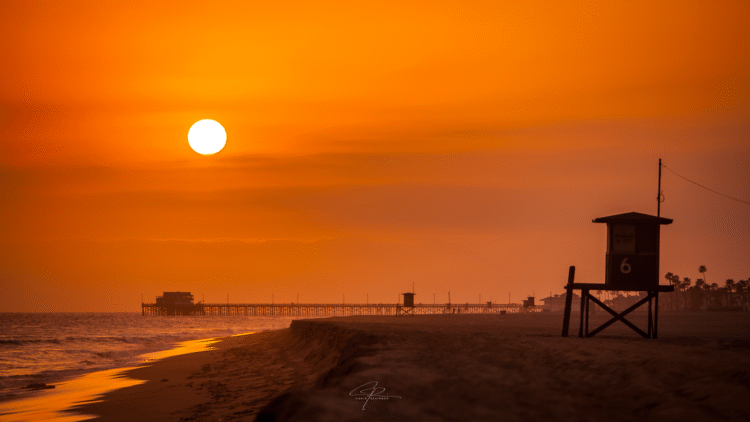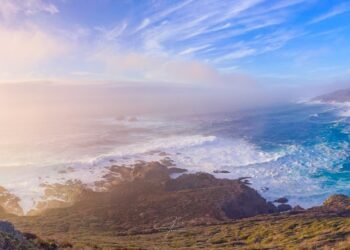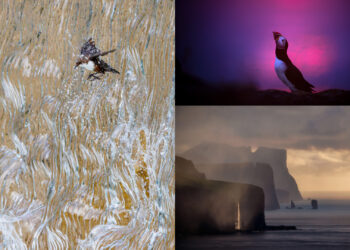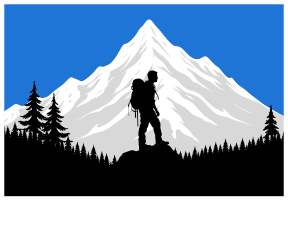Basic Daylight Exposure (BDE) is the foundation of manually determining exposures in photography. It allows us to have an objective starting point from which we can determine exposures in all other situations.
Have you ever wondered how a photographer just seemed to know what the exposure was for a given landscape? BDE and plenty of experience is what allows you to get to this ability.
Its important to understand why we need to control the camera instead of the camera controlling the photo. While today’s automated cameras can be very good, it can’t know what image you want to produce in the end. You may want a dark image, or an out of focus background etc… so you have to be in complete control.
‘Daylight’ refers to a scene lit by the sun, our planets key-light, and applies when the sun is 20 degrees or higher from the horizon. Also, it can be roughly thought of as 10am to 4pm ‘ish’ depending where you are located and the time of the year. Since the sun is so far away, altitude does not change the calculation. BDE is the same on the summit of Everest as it is on the floor of Death Valley.
Expressed in whole stops, the formula for BDE is actually very simple:
BDE = 1/iso @ f16
For example:
- iso 250 = Shutter Speed 1/250, Aperture f16
- iso 500 = Shutter Speed 1/500, Aperture f16
Now that you have the basis for a sunlit overall scene, you can now apply that to all scenes by compensating your exposure. In other words, modify BDE for the type of lighting in the world in front of you.
For example, today is weak and hazy overcast so you open up 1 stop from BDE. We would say “BDE +1”.
A normal, clouded but bright day with a noticeable reduction in light levels would be +2 and so on..
Here is a table of common situations you will encounter:
| Sunlight, clear sunny day | BDE |
| Sunlit Snow or sand | -1 |
| Overcast, weak and hazy | +1 |
| Overcast, normal cloudy day | +2 |
| Overcast, heavy or in open shade | +3 |
| Stage Shows, Neon Lit Signs | +5 |
| Store Windows at Night | +6 |
| Brightly Lit Downtown | +7 |
| School, Church interior stage | +9 |
| City Skyline at night | +13 |
The first row shows a -1! We can have negative numbers in BDE. In sunlit snow or sand environments, the ground reflects so much light that we would want to stop down 1 stop to prevent the snow or sand from over exposing.
Reciprocal Exposures
A reciprocal exposure is another exposure that produces the same exposure as the one you are using, but with different combinations of the Exposure Triangle.
Example 1
(A) 1/125, f11 @ iso200 and (B) 1/250, f8 @ iso200 are reciprocal. They both produce the same exposure. In this case we stopped down the shutter 1 stop, and opened up the aperture 1 stop.
Example 2
(A) 1/2000, f2.8, ISO50 and (B) 1/50, f16, ISO50 are reciprocal.
You will notice in Example 2, these settings are much farther apart. One is BDE and the other is reciprocal to that. Back in the film days, when I shot a lot of Velvia, these two exposures were my defaults. If I needed a lot of depth-of-field, I started with exposure (B). If I needed a fast shutter to freeze action, I started with (A). The same applies with modern DSLM cameras, except you are not locked to one iso that was restricted by the film speed.
Real world example:
You are in a park on an overcast day, and there is a dog catching a frizbee. You want to take a photo of the dog frozen in mid air jumping after the frizbee. You will need to freeze the action with a fast shutter speed. Your camera’s base iso is 100 and you like to use that for the best image quality possible. So you figure BDE to be 1/125, f16, iso100, but we need +2 for the overcast day so we now have 1/125, f8, iso100. But 1/125 is probably too slow to freeze the dogs motion in the air, so we need a reciprocal exposure with a faster shutter speed. So our exposure is 1/1000, f2.8, iso100.
Keep in mind that most all DSLM cameras today can operate in 1/3 stop increments. So, you can have a shutter speed of 1/100, and an aperture of f18 etc.. The above examples are in whole stops to keep things easy.
Reference
Aperture in 1/3 stop increments
1, 1.1, 1.2, 1.4, 1.6, 1.8, 2, 2.2, 2.5, 2.8, 3.2, 3.5, 4, 4.5, 5, 5.6, 6.3, 7.1, 8, 9, 10, 11, 13, 14, 16, 18, 20, 22, 25, 29, 32, 36
Shutter Speed in 1/3 stop increments
1/4, 1/5, 1/6, 1/8, 1/10, 1/13, 1/15, 1/20, 1/25, 1/30, 1/40, 1/50, 1/60, 1/80, 1/100, 1/125, 1/160, 1/200, 1/250, 1/320, 1/400, 1/500, 1/640, 1/800, 1/1000, 1/1250, 1/1600, 1/2000, 1/2500, 1/3200, 1/4000
ISO
50, 100, 125, 160, 200, 250, 320, 400, 500, 640, 800, 1000, 1250, 1600, 2000, 2500, 3200, 4000, 5000, 6400, 8000, 10000, 12800, 16000, 20000, 25600, 32000, 40000, 51200, 64000, 80000, 102400, 204800
Ok, you read and understood this… But how do you actually know this works? GO SHOOT PHOTOS! Lots of them. Print a little card of the table above to take with you. Go outside, put your camera in manual and shoot photos using the BDE method. Look at them on the screen, and also your computer if you have one. Begin to associate the result with what you set on the camera and the lighting environment outside and remember it. Your camera might like a +1.5 on a weak overcast day instead of just +1.0. Learn how your camera performs, they are not all the same.
It will take some time for it to become second nature to you, but when it does, you will be so much more confident in your abilities. Once this is a habit, you can then learn how to incorporate it to work with your camera’s meter and built in histograms. More on that later…












